What exercises should women in their 20s, 30s, 40s and 50s do to build strength, flexibility and fitness?
Getting in shape and staying fit don’t have to be a mystery for women. CNA Women speaks to a personal trainer, nutritionist and orthopaedic surgeon on what you can do as you move through the decades.
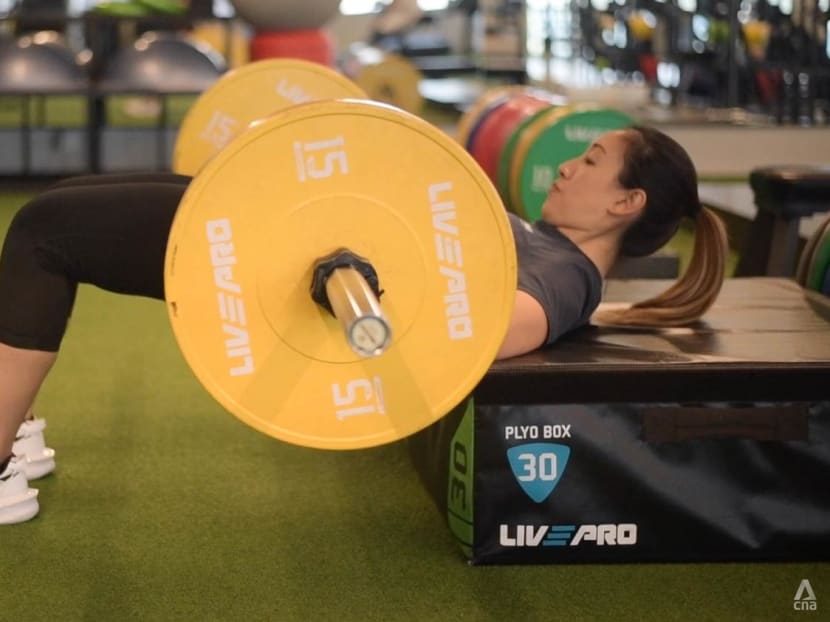
Evy Bellina, personal trainer and co-founder of Omni Strength, recommends the exercises featured here, which women in their 20s through 50s can do to keep healthy. (Photo: Kelly Hui/CNA)
Working out can be a puzzle – for some it is a drag, and for others it can be an addiction. The common excuse for women putting off exercising is due to age, existing conditions or the risk of being injured. So just how does one start?
For women, the stakes are high when we put our fitness in perspective. Our body undergoes hormonal changes through the years from youth to menopause, plus a sedentary life can contribute to a decrease in metabolism, leading to reduced muscle and bone mass, resulting in poorer functionality (our ability to walk, move, coordination and balance).
Studies have shown that staying active as early as possible has a positive effect on health as we age. A 2014 study focusing on women showed that physical activity plays a pivotal role in slowing down physical decline, improves functionality and even quality of life.
Whether you are all of 23 or trying something new at 53, it’s never too late to adapt or try new healthy habits. A Harvard Medical Study found that most people can ease into a fitness regime fairly easily and quickly.
We spoke with three experts in their field to help you on your fitness regime for any age: Evy Bellina, 33, co-founder of Omni Strength and a personal trainer for the past 10 years; Fiona Chia, principal nutritionist and managing director at Health Can Be Fun; and Dr James Wee, orthopaedic surgeon at Oxford Orthopaedics.
The common thread which all three experts shared is this: The earlier you start building your fitness foundation and watching your diet, the longer you can enjoy the benefits of having this fit and healthy baseline.
RELATED:
YOUR 20S: A TIME OF DISCOVERY, INDEPENDENCE AND MOBILITY
This is the time to explore which fitness regime suits you best, so you can build a fitness foundation, said fitness trainer Bellina. “Activities you pick should bring you that element of joy. Because once you enjoy something, you’ll also do it consistently, inevitably becoming stronger and better in the process.”
Dr Wee advised that 20-somethings balance strength and cardiovascular training. Strength training builds lean muscle mass and increases your basal metabolic rate (the rate where your body burns energy at rest). Cardiovascular training – at least 30 minutes at a moderate intensity, daily – helps your heart health.
“Young adults in their 20s … tend to focus on interval training or high intensity interval training (HIIT) type of activities. But it’s important to have proper form to minimise the risk of injuries,” he said, adding that he has seen more patients with kneecap injuries, as well as ligament injuries to the knees and ankles – a result of poor form or over-training.
The focus at this stage in life is also establishing a healthy relationship with food in keeping optimal body composition – the percentage of bone, muscle and fat in your body – for your activity level.
For fitness
Strength training can help women fight bone density and skeletal muscle loss, both of which are often associated with the menstrual cycle and childbearing. CNA Women teams up with trainer Evy Bellina to show you how it’s done.
Incorporate all elements of cardiovascular, muscular strength and endurance, as well as mobility training. These can be any combination of gym classes, strength training by using body weight or weights, and other cardiovascular-focused exercises like running, cycling, and even HIIT workouts. Also, do stretching disciplines like yoga or Pilates for increased flexibility.
Bellina recommended focusing on the back, shoulders and glutes. “When you train these muscle groups, you not only increase your strength, but it also gives you a more beautiful silhouette.”
Exercises to do
For the upper body, try lat pulldowns (either with a machine in the gym or using a resistance band) and inclined push-ups.

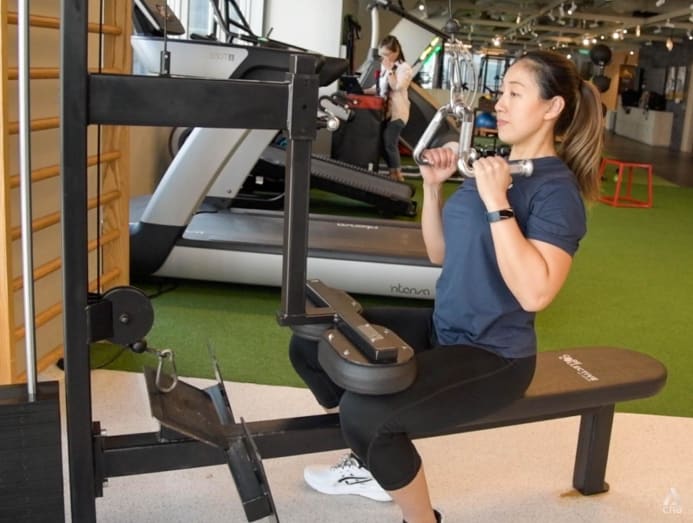
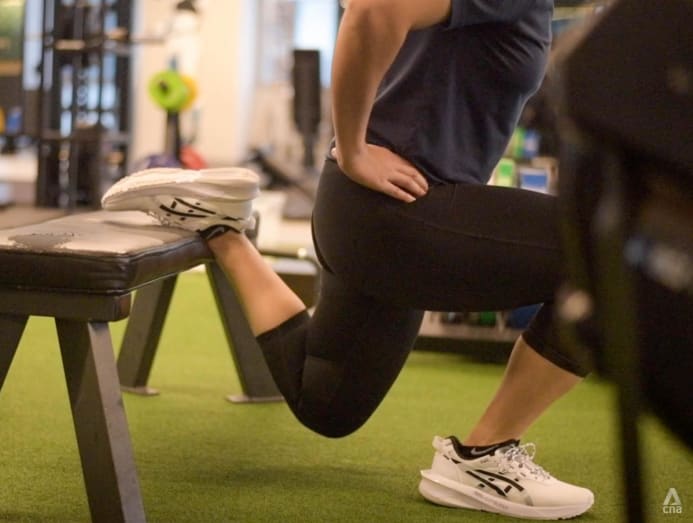
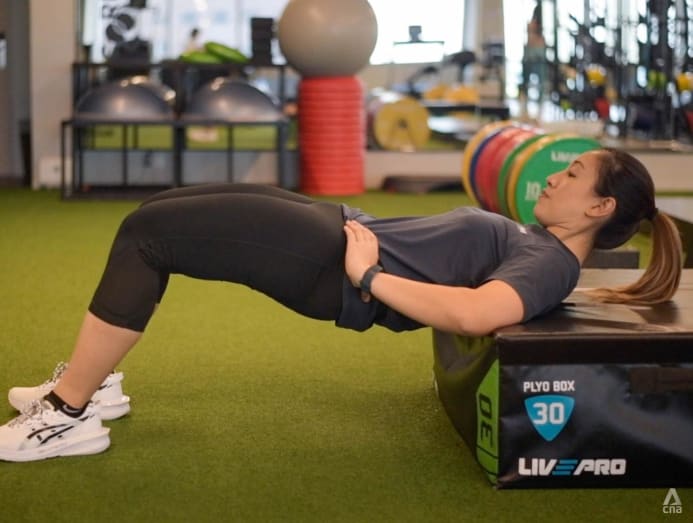
For nutrition
A balanced diet aside, nutritionist Chia said there are other important things to consider. “During this time when women are most active, the focus should also be on meeting calcium needs to achieve peak bone mass and also, on iron, to prevent deficiencies. Don’t forget to look at vitamin D from sunlight to aid with calcium absorption.”
She cautioned: Understand your individual fitness ability and keep good hydration daily. Speak to a professional if you feel unwell from exercise.
Look out for
Overtraining. “In the past three to four months, I have seen two patients develop exercise-induced rhabdo from spinning. This is a condition caused by unaccustomed intense physical exercise and the risk of acute kidney failure caused by toxicity in the body’s circulation can lead to death,” said Dr Wee.
To avoid this, he recommended hydrating during exercise and taking regular breaks to avoid overheating. If you’re new to any exercise regimen, “start low and go slow” before progressing to more advanced intensity.
RELATED:
YOUR 30S: SETTLING INTO A ROUTINE AND HAVING MORE FAMILY OR PERSONAL COMMITMENTS
For most women in this stage, finding time amid growing commitments in other areas of life is the biggest challenge. Whether it’s establishing a career, starting a family or looking after young children, the body requires stamina and muscle strength to help you accomplish all of that.
For fitness
These exercises help the body recover from childbirth by regaining stamina and strength. CNA Women teams up with trainer Evy Bellina to show you how it’s done.
“By this stage, women who have been active in their 20s would have set up a consistent fitness routine. If you haven’t established one, the key is getting started,” said Bellina.
“To give you the best results for your time, you will not go wrong with strength and resistance training,” she added. These give you a better chance of withstanding bone density and muscle loss when you’re older.
Building up your core strength also helps with pregnancy, in particular, recovery from diastasis recti, which is the separation of muscles in the midline of your abdomen during and after pregnancy. You’ll also want to build pelvic floor strength as a weak pelvic floor can cause discomfort during and post-pregnancy.
To those afraid of continuing or starting their fitness routine during this time, Bellina advised: “Knowing your body’s limits and getting your doctor’s clearance to exercise is all you need. That said, incorporating compound (full body) and core exercises with modifications to suit your personal needs will allow you to stay active.”
Exercises to do
For the upper body, try doing inclined dumbbell chest press, and inclined planks.
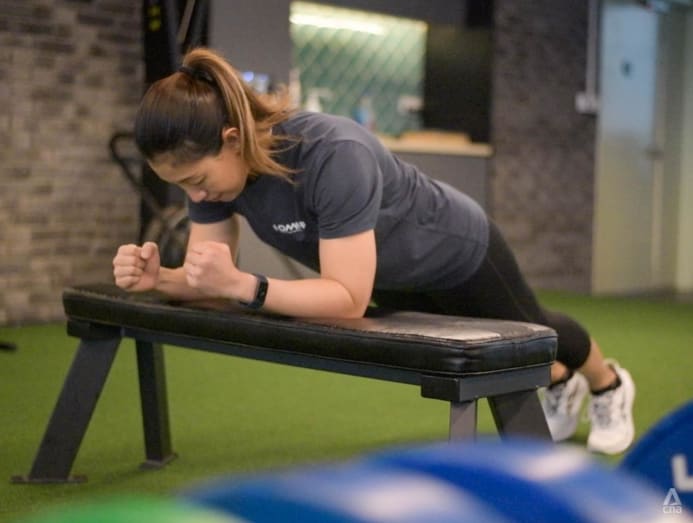
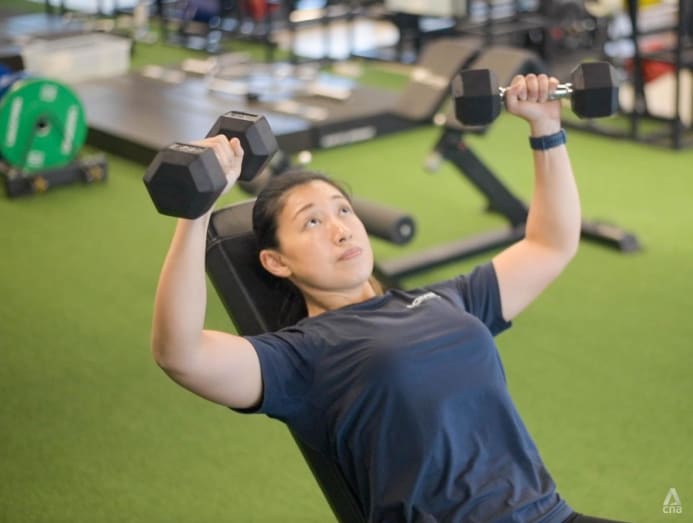
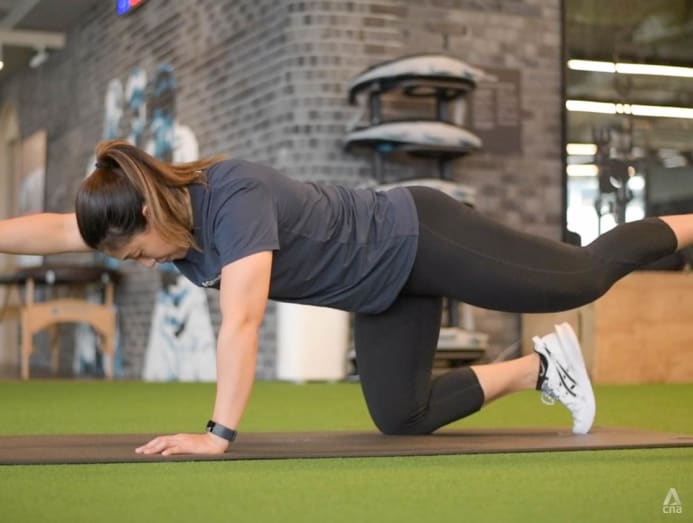
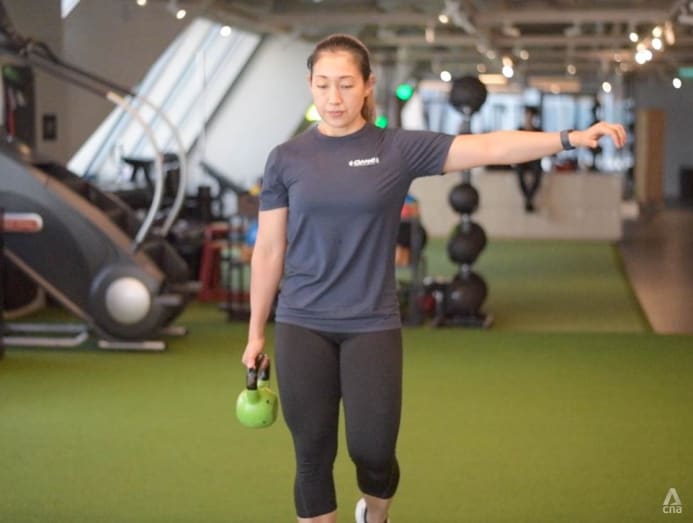
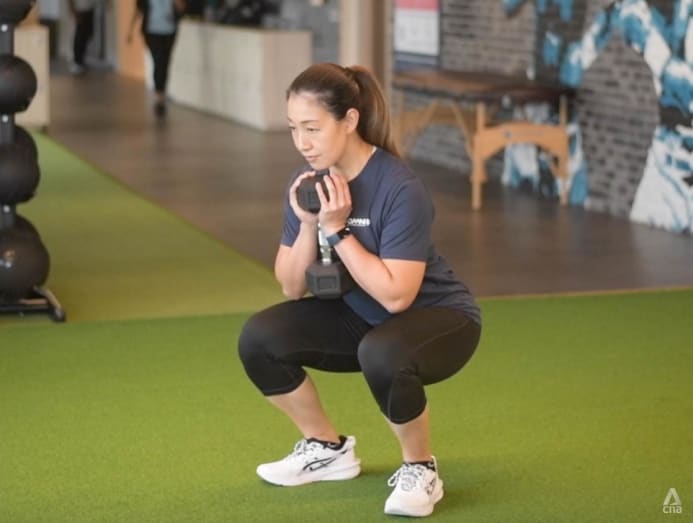
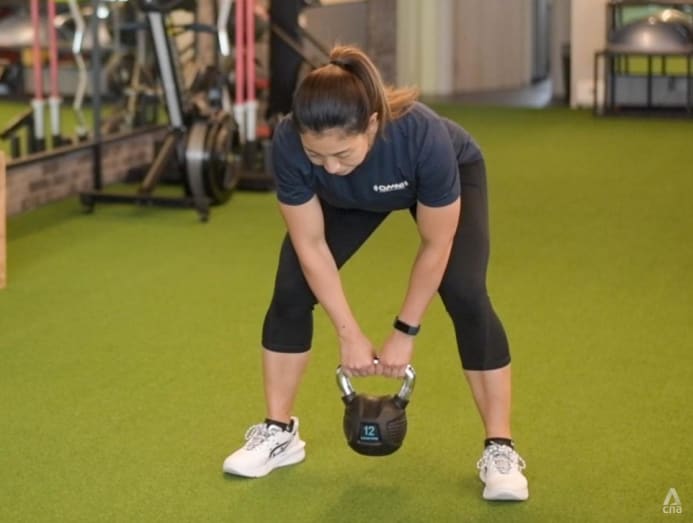
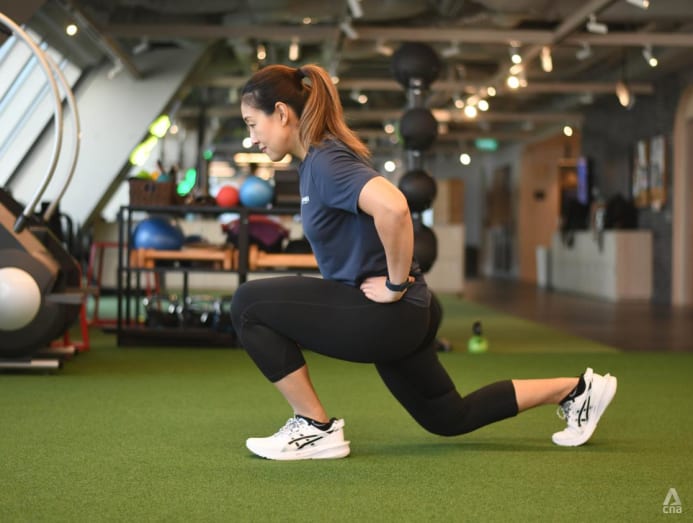
For nutrition
Eating whole foods that supplement your macronutrients, such as protein, carbohydrates and fat requirements, is the key to staying healthy. Essential micronutrients such as folate, vitamin D, calcium, Omega-3 and other vitamins should also be a focus. If you’re breastfeeding, consider your calcium intake as bone density takes a hit during this time.
Protein intake should be a key focus for women in their 30s. Proteins are responsible for a lot of work that the cells do and are needed to make hormones, enzymes and muscles – when your body has more muscle, you boost your body’s resting metabolism.
Chia recommended eating at least 1 gram of protein per kilogram of your body weight to ensure sufficient nutrients for all the body needs to do.
Women who have high-stress lifestyles should also focus on supporting strong immunity. “Don’t forget your essentials like vitamin C (or even a multi-vitamin) to cover your bases,” she said. “A high-fibre diet and fermented food like kimchi can help with promoting good gut health too. It prevents inflammation and reduces the risk of the three-highs (blood pressure, cholesterol and blood sugar levels) that occur in the senior years.”
Look out for
Early signs of pain and discomfort. “If you develop back, knee or ankle pain after minor training injuries, seek prompt and early medical attention. This is especially so if pain, swelling and other symptoms do not noticeably improve after three to five days,” Dr Wee advised.
He added that women in their 30s tend to see high success rates for the treatment of joint injuries such as cartilage, ligament and meniscus tears (in the knee) – there is better functional recovery, and they can quickly return to work and working out.
RELATED:
YOUR 40S: A TIME OF BALANCING HORMONES AND CHANGES IN YOUR MID-LIFE
Most women will enter perimenopause sometime in their 40s, making the transition to menopause. Here is where levels of oestrogen, the female hormone, will dip.
A common misconception is that hormonal changes in your 40s slow down your metabolism, resulting in weight gain. But a study has debunked this, showing that metabolism can remain stable from the ages of 20 to 60 before it starts to decline. So there is hope for those of us looking to manage activity in our 40s.
By this time, you may also have picked up some joint damage or injury, particularly in the knees and ankles, said Dr Wee. So if you’re starting a fitness regimen for the first time, consult a doctor to decide on a programme that would suit you, without worsening pre-existing injuries.
RELATED:
Balance and mobility are key to supporting the body as women get older. These exercises improve coordination, range of movement and stability. CNA Women teams up with trainer Evy Bellina to show you how it’s done.
For fitness
To combat declining metabolic rates, Bellina said fitness professionals always look to muscle mass and activity levels. “Our goal is always building strength, for increased muscle mass, while improving and supporting mobility so we can continue to move as we age and keep this healthy metabolism.” Lifting weights also increases bone density, which is what all women need to build up.
“When I train my clients in their 40s, I often ask them to look at their protein intake,” she added. “The body’s ability to absorb protein declines with age and having insufficient amounts can affect your body’s functionality. I also get them to consider more fibre and probiotics to promote a healthy gut to allow nutrients to digest better.”
If you already have a fitness routine in place, consider your overall well-being during this time and remember to incorporate sufficient rest days to let the body recover from strenuous activity.
Exercises to do
This stage of life is about setting up for the next phase of ageing. Exercises must keep muscles strong while supporting one’s ability to move. Mastering single-sided movements helps with keeping balance while improving the body’s strength on either side.
For the upper body: Single arm rows and single arm press.
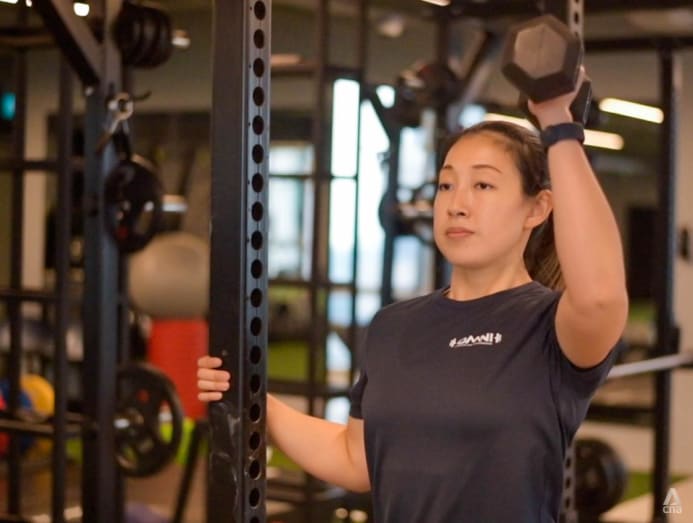
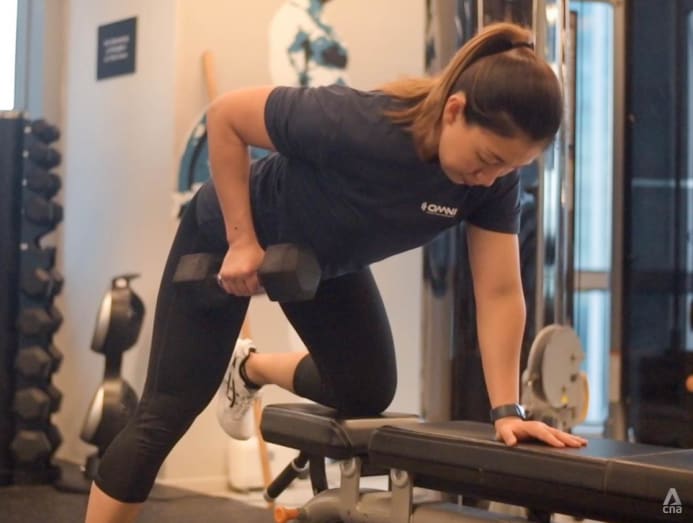
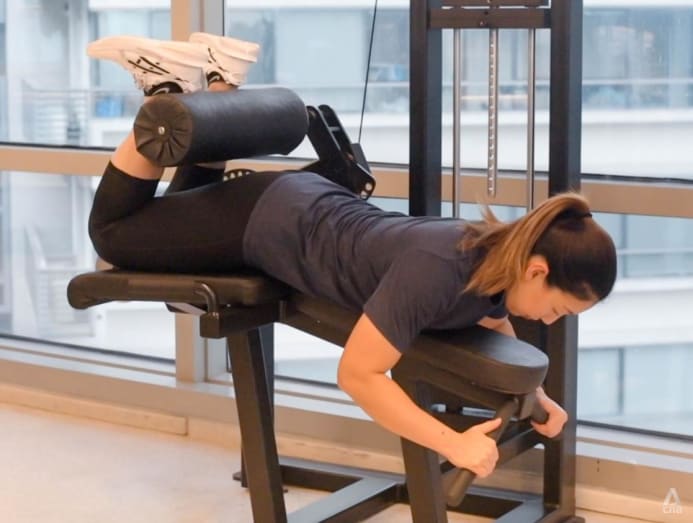
For nutrition
“Avoid high trans fats foods to reduce inflammation. Instead, add a healthy dose of 'good' unsaturated fats from nuts, oils and seeds with Omega-3 acids to improve 'good' cholesterol levels (HDL). These will keep diseases at bay, your moods in check and even helps with your skin,” said Chia.
“This age is where calcium loss is most apparent so include vitamin D and calcium sources to supplement your daily intake,” she added. She also suggested an increase of antioxidants from fresh fruit and vegetables to prevent oxidative stress from the environment, leading to cell damage.
Look out for
Worsening injuries. As women progress towards their mid-40s onto their 50s, adjusting their exercise intensity would reduce the chances of getting injured or aggravating existing injuries.
Dr Wee advised that those with knee pain avoid deep bending (beyond 90 degrees), and to do squats and deep lunges with care. “I also advise patients to pivot from high-intensity cardio exercises to moderate intensity, and spaced out over longer sessions to minimise risk of injury,” he added.
RELATED:
YOUR 50S AND BEYOND: EASING INTO THE SENIOR YEARS
With menopause comes a decline of bone health, and muscle loss, with some issues such as joint pain or aches. “If you have laid your fitness foundation early on in life, you are likely to maintain a higher physical capacity than someone who is only beginning,” said Bellina.
Again, experts say it is still never too late to start – just that your baseline would be different from someone who has had years of experience doing so. You’ll eventually get there, but it will take you some time.
For fitness
“Factors that can reduce one’s ability to exercise optimally are: A lower range of motion from weak muscles and joint inflammation, and a slight decline in neurological function which can affect one’s balance as well,” said Bellina.
Beyond your 50s, both cognitive and physical capacity will eventually decline. So exercises must be modified so you can safely participate in strength training. In addition, to improve cognitive powers, coordination drills and alternating single-sided exercises are effective.
Dr Wee also advised: “From your 50s, look into maintaining joint suppleness, range of movement, stability and strength. Many in this age group would also see some joint degeneration and arthritis, particularly in the knees and hips. Stretching exercises like yoga and Pilates will help strengthen those.”
Further decline in strength, balance and mobility increases the risk of falling for women in their 60s. Incorporating unilateral lower body exercises strengthens the legs, while minimising fall risk.
Consider adding a longer rest time, lowering your training intensity and not to overdo any exercises. Also incorporate exercises which require coordination to improve balance and range of motion.
Exercises to do
For the upper body: Seated row or lat pull-downs with resistance bands.
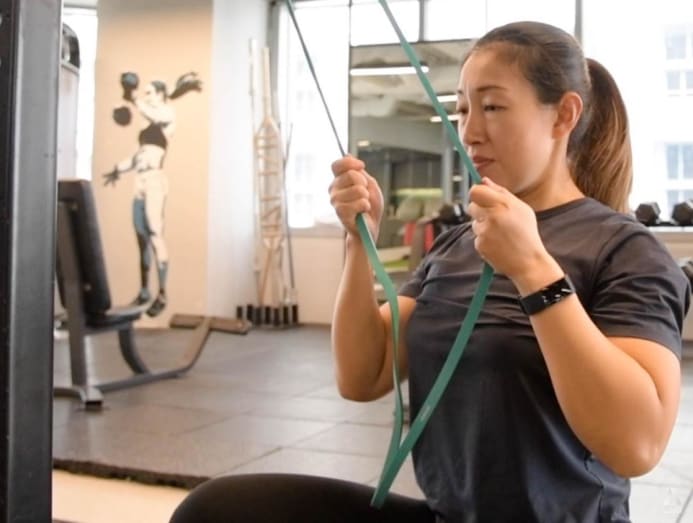
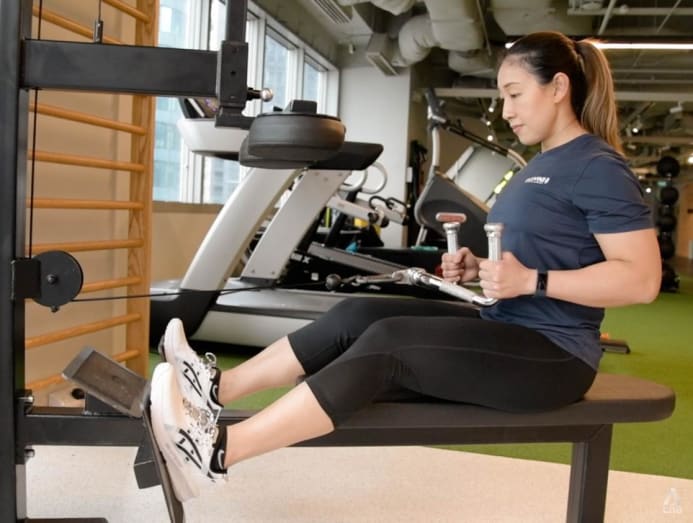
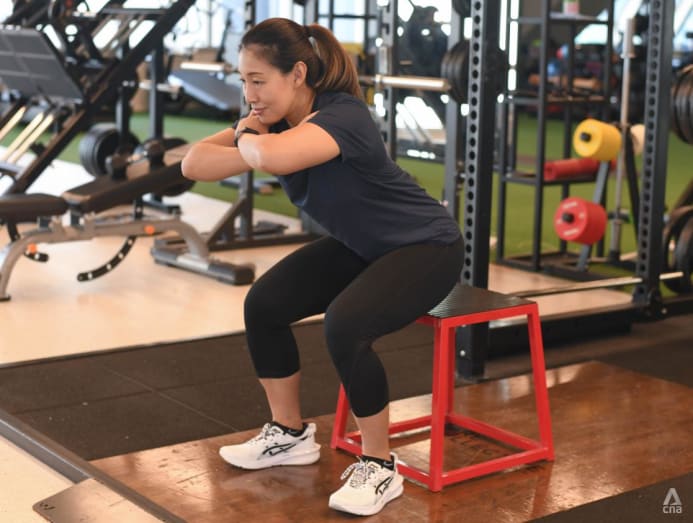
For nutrition
As one ages, calorific requirements are lower so quality, not quantity is key. “You will already have experienced sarcopenia or skeletal muscle loss so your protein intake should be adequate,” said Chia.
Also consider plant-based sources of protein to include more antioxidants in your diet, she added. And don’t forget vitamins C, D and K, as well as zinc and iron to boost bone heath, healthy joints and offer overall immune protection.
Look out for
Get help for persistent pain or discomfort from basic movements like walking and stair climbing. “These are signs of arthritis and the earlier you start to treat the problem the better,” said Dr Wee.
“In more severe cases, surgery may be required, including joint-replacement surgery. They have been immensely successful in restoring pain-free function to damaged hips and knees. This is not only to alleviate pain but even more important in allowing patients to return to their general activities, cardiovascular health and improve their quality of life.”
CNA Women is a section on CNA Lifestyle that seeks to inform, empower and inspire the modern woman. If you have women-related news, issues and ideas to share with us, email CNAWomen [at] mediacorp.com.sg.





